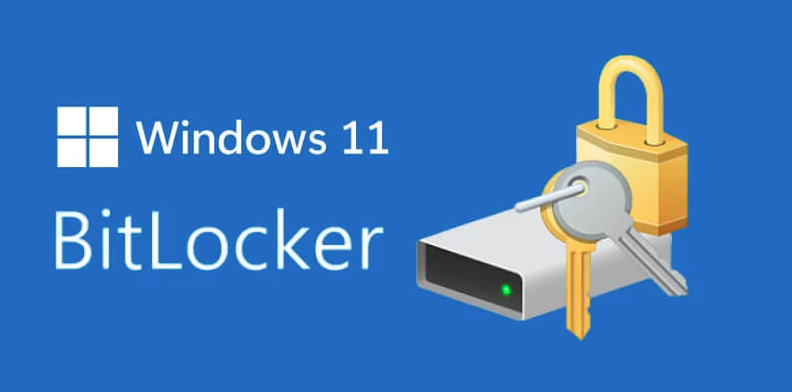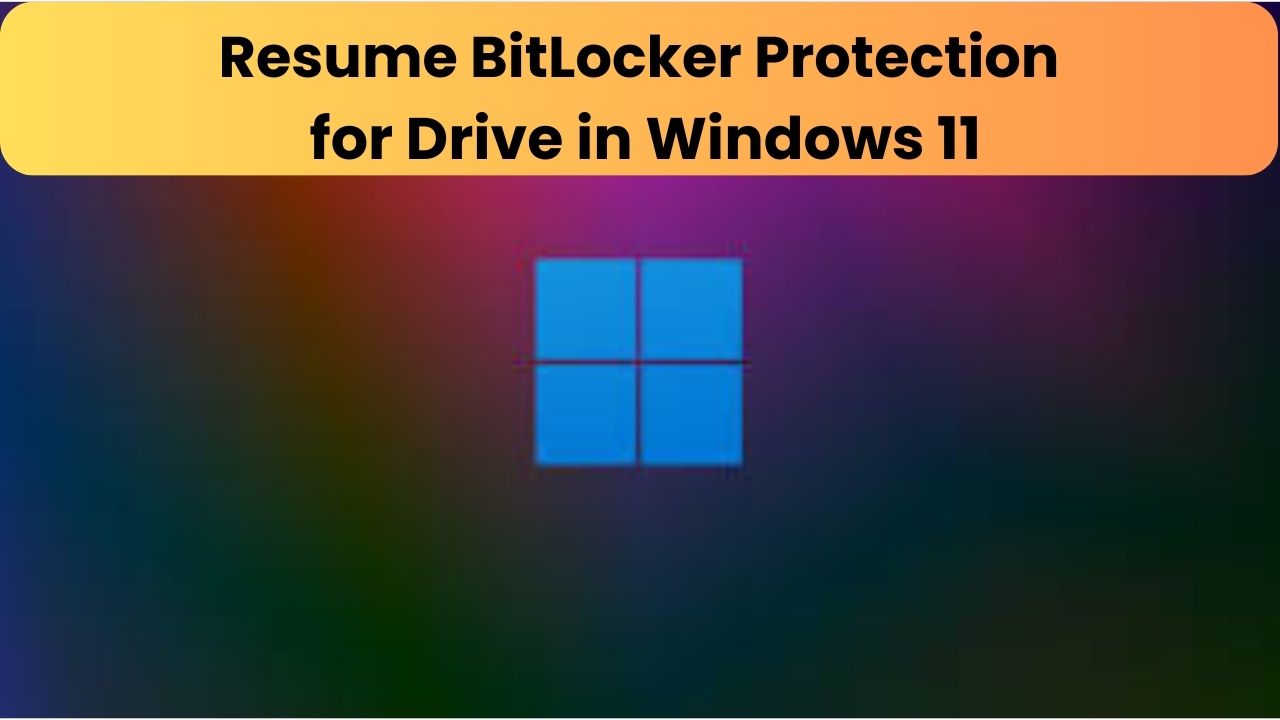BitLocker is a powerful encryption feature built into Windows 11 that helps protect your data by encrypting your drives. Sometimes, you may need to suspend BitLocker protection temporarily—for example, when performing system updates or hardware changes—and then resume it once the task is complete. This comprehensive tutorial will guide you through the process of resuming BitLocker protection for a drive in Windows 11 using various methods, ensuring your data remains secure.

Table of Contents
- Prerequisites
- Understanding BitLocker Status
- Method 1: Using the Control Panel
- Method 2: Using the Settings App
- Method 3: Using Command Prompt
- Method 4: Using PowerShell
- Important Considerations
- Troubleshooting Common Issues
- Conclusion
Prerequisites
Before you begin, ensure that:
- BitLocker is Enabled: BitLocker must have been previously enabled on the drive you wish to resume protection for.
- Administrator Privileges: You need to have administrative rights on your Windows 11 PC.
- Backup Recovery Key: Ensure you have access to your BitLocker recovery key. You can find it saved to your Microsoft account, a USB drive, a file, or printed on paper.
Note: Resuming BitLocker protection reinstates encryption on your drive, ensuring your data remains secure. Always make sure to resume protection promptly after completing tasks that required its suspension.
Understanding BitLocker Status
Before resuming BitLocker protection, it’s helpful to understand the current status of BitLocker on your drive. You can check the status using the following methods:
Using Control Panel
- Open Control Panel.
- Navigate to System and Security > BitLocker Drive Encryption.
- Here, you’ll see the status of each drive (e.g., On, Off, Suspended).
Using Command Prompt
- Open Command Prompt as an administrator.
- Type the following command and press Enter:luaCopy code
manage-bde -status - Review the status information for each drive listed.
Using PowerShell
- Open PowerShell as an administrator.
- Type the following command and press Enter:powershellCopy code
Get-BitLockerVolume - Review the status information for each drive listed.
Method 1: Using the Control Panel
Step-by-Step Guide
- Open Control Panel:
- Press
Win + R, typecontrol, and press Enter.
- Press
- Navigate to BitLocker Drive Encryption:
- In the Control Panel, set the
View byoption to Large icons or Small icons. - Click on BitLocker Drive Encryption.
- In the Control Panel, set the
- Locate the Suspended Drive:
- Find the drive for which BitLocker protection is suspended (e.g., C: drive).
- Resume Protection:
- Click on Resume protection next to the suspended drive.
- Confirm Resumption:
- A confirmation dialog will appear. Click Yes to proceed.
- Verification:
- The status will change to On indicating that BitLocker protection has been resumed.
Method 2: Using the Settings App
Step-by-Step Guide
- Open Settings:
- Press
Win + Ito open the Settings app.
- Press
- Navigate to Privacy & Security:
- In the left sidebar, click on Privacy & security.
- Access Device Encryption or BitLocker:
- Scroll down and click on Device encryption.
- If you don’t see Device encryption, click on BitLocker Drive Encryption under the Security section.
- Manage BitLocker:
- Find the drive for which BitLocker protection is suspended.
- Click on Manage BitLocker.
- Resume Protection:
- Click on Resume protection next to the suspended drive.
- Confirm Resumption:
- A confirmation prompt will appear. Click Yes to resume BitLocker protection.
- Verification:
- The status will update to On, indicating that BitLocker protection is active again.
Method 3: Using Command Prompt
Step-by-Step Guide
- Open Command Prompt as Administrator:
- Press
Win + S, typecmd, right-click on Command Prompt, and select Run as administrator.
- Press
- Resume BitLocker Protection:
- Type the following command and press Enter:bashCopy code
manage-bde -protectors -enable C:(ReplaceC:with the letter of the drive you want to resume BitLocker for.)
- Type the following command and press Enter:bashCopy code
- Confirm Resumption:
- You will receive a confirmation message indicating that BitLocker protection has been resumed.
- Verify Status:
- To check the status, type:luaCopy code
manage-bde -status C:- Look for
Protection Status: Protection is On.
- Look for
- To check the status, type:luaCopy code
Example Commands
cmdCopy codemanage-bde -protectors -enable C:
manage-bde -status C:
Method 4: Using PowerShell
Step-by-Step Guide
- Open PowerShell as Administrator:
- Press
Win + X, then select Windows Terminal (Admin) or PowerShell (Admin).
- Press
- Resume BitLocker Protection:
- Enter the following command and press Enter:powershellCopy code
Resume-BitLocker -MountPoint "C:"(ReplaceC:with the letter of the drive you want to resume BitLocker for.)
- Enter the following command and press Enter:powershellCopy code
- Confirm Resumption:
- You will receive a confirmation message indicating that BitLocker protection has been resumed.
- Verify Status:
- To check the status, type:powershellCopy code
Get-BitLockerVolume -MountPoint "C:"- Look for
Protection Status: Protection On.
- Look for
- To check the status, type:powershellCopy code
Example Commands
powershellCopy codeResume-BitLocker -MountPoint "C:"
Get-BitLockerVolume -MountPoint "C:"
Important Considerations
- Security Risks: Suspending BitLocker protection temporarily reduces the security of your data. Ensure that you only suspend protection when necessary and resume it as soon as possible.
- Administrative Rights: All methods require administrative privileges. Ensure you have the necessary permissions to make these changes.
- System Impact: Some operations, like system updates or hardware changes, may require BitLocker to be suspended. Always follow best practices and guidelines provided by Microsoft or your IT department.
- Backup Recovery Key: Always keep a backup of your BitLocker recovery key in a safe place. This is crucial in case you forget your password or encounter issues accessing your drive.
Troubleshooting Common Issues
1. Cannot Resume Protection via Control Panel or Settings
- Possible Cause: Another security feature or policy might be interfering.
- Solution: Ensure that no pending updates or system changes are requiring BitLocker to remain suspended. Restart your computer and try again.
2. Command Prompt or PowerShell Errors
- Possible Cause: Incorrect syntax or insufficient permissions.
- Solution: Double-check the command syntax and ensure you are running the Command Prompt or PowerShell as an administrator.
3. BitLocker Not Resuming Automatically After Reboot
- Possible Cause: Incorrect suspension settings.
- Solution: Verify the suspension status using Command Prompt or PowerShell and manually resume protection if necessary.
4. Forgot Recovery Key
- Possible Cause: If you cannot access your drive, you might need the recovery key.
- Solution: Retrieve your recovery key from your Microsoft account, USB drive, printed document, or contact your system administrator if it’s a work device.
Conclusion
Resuming BitLocker protection in Windows 11 is a straightforward process once you know the right steps. Whether you prefer using the Control Panel, Settings app, Command Prompt, or PowerShell, each method offers a reliable way to ensure your data remains encrypted and secure. Always prioritize your data’s security by minimizing the time BitLocker is suspended and following best practices to prevent unauthorized access.
Additional Resources
- Microsoft’s Official BitLocker Documentation: BitLocker Overview
- How to Backup Your BitLocker Recovery Key: Backup Recovery Key
- Troubleshooting BitLocker Issues: BitLocker Troubleshooting

































